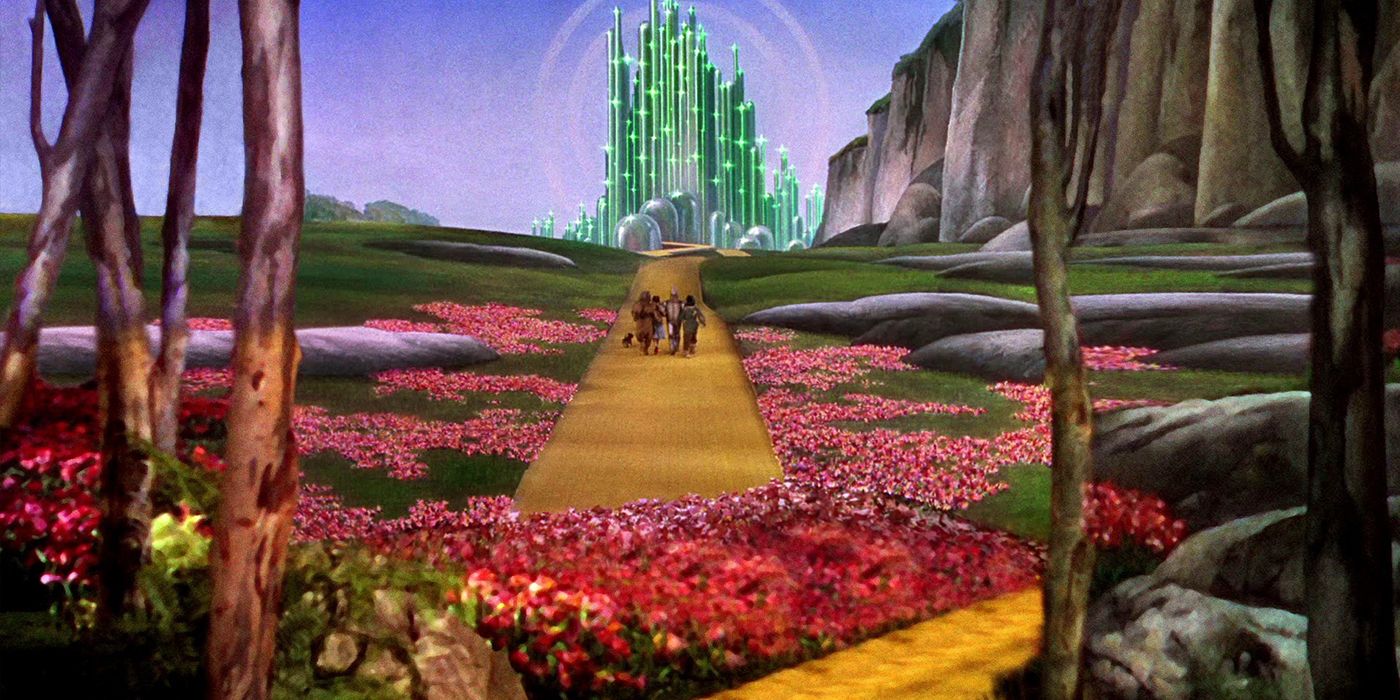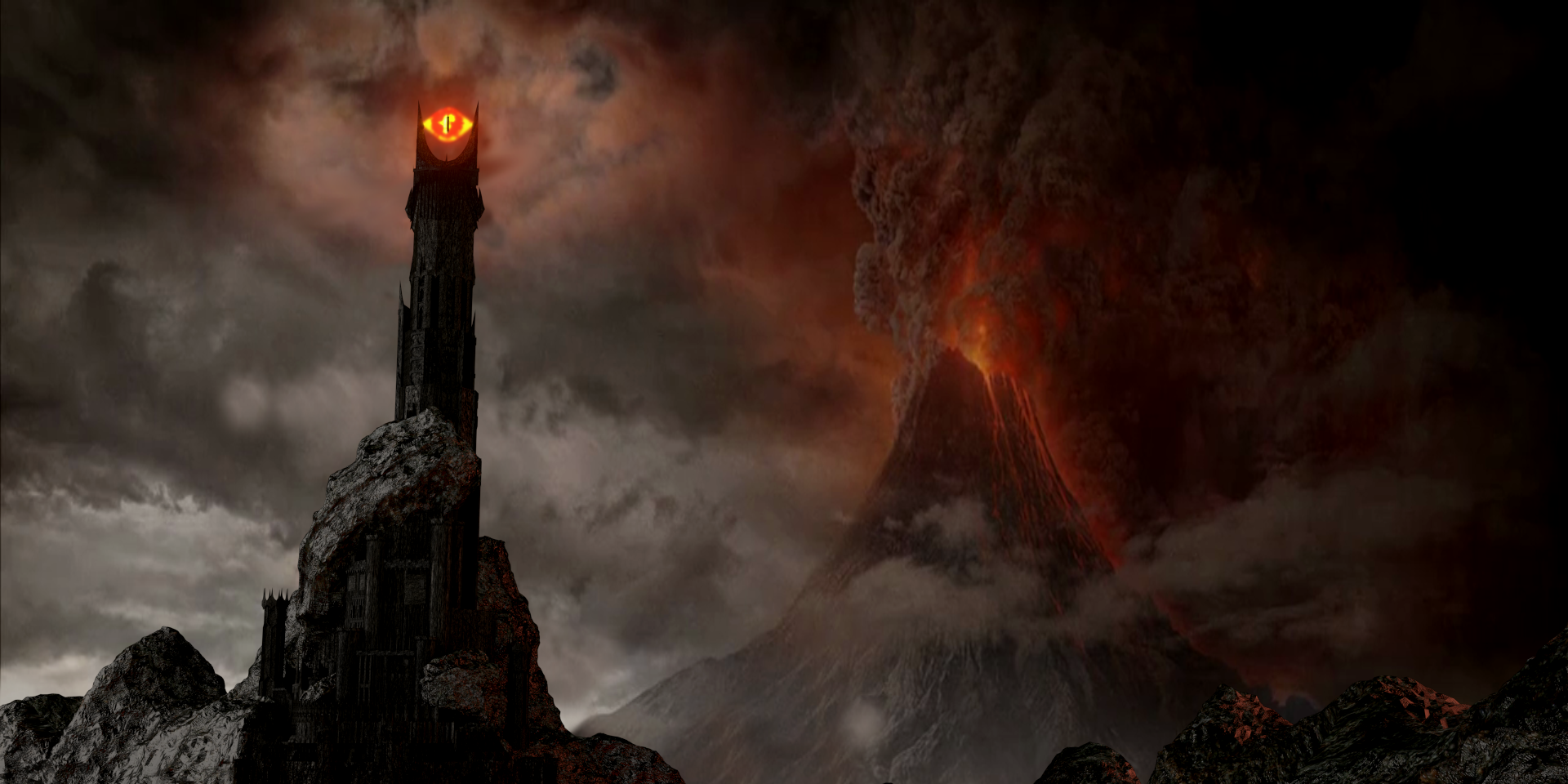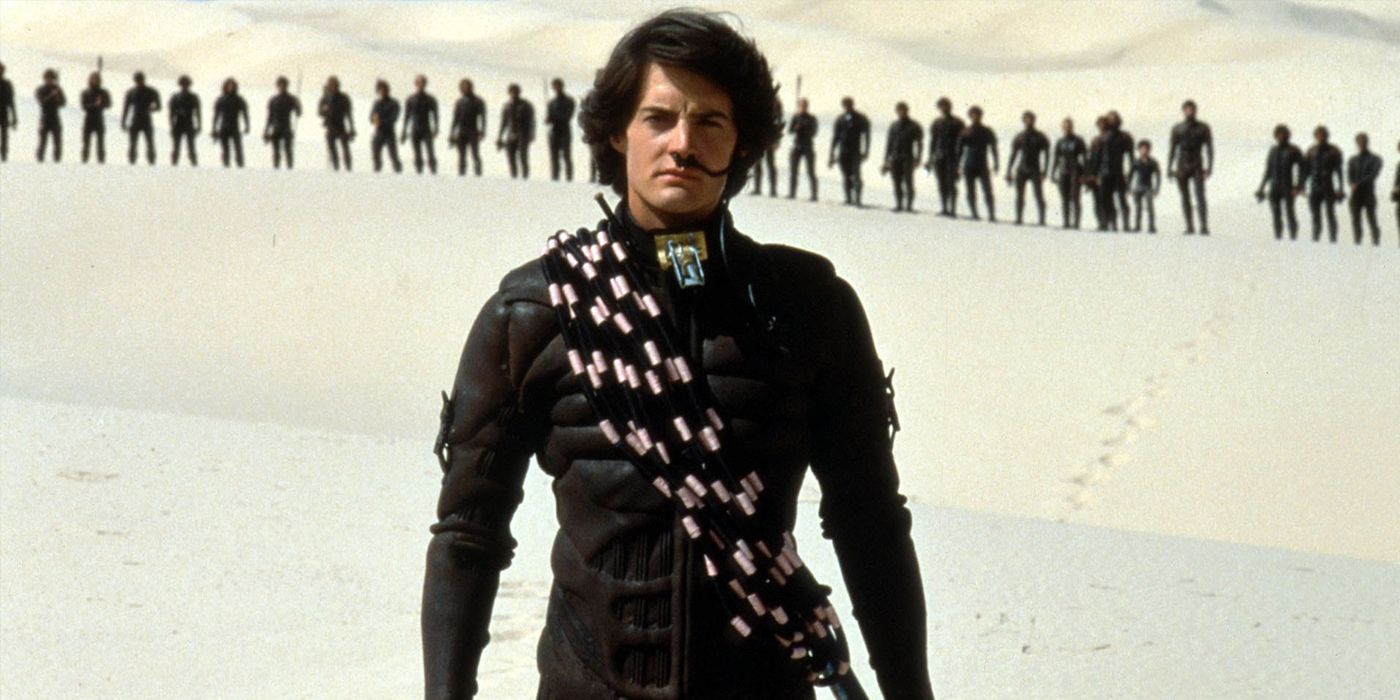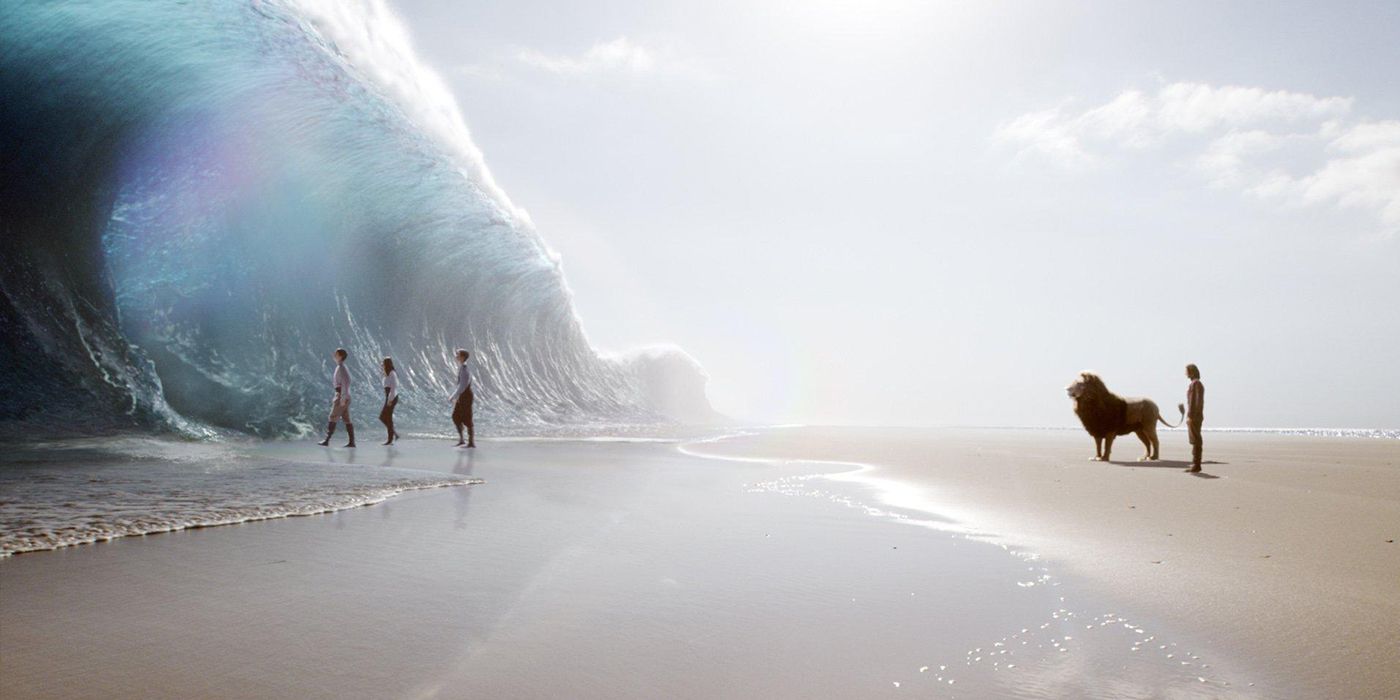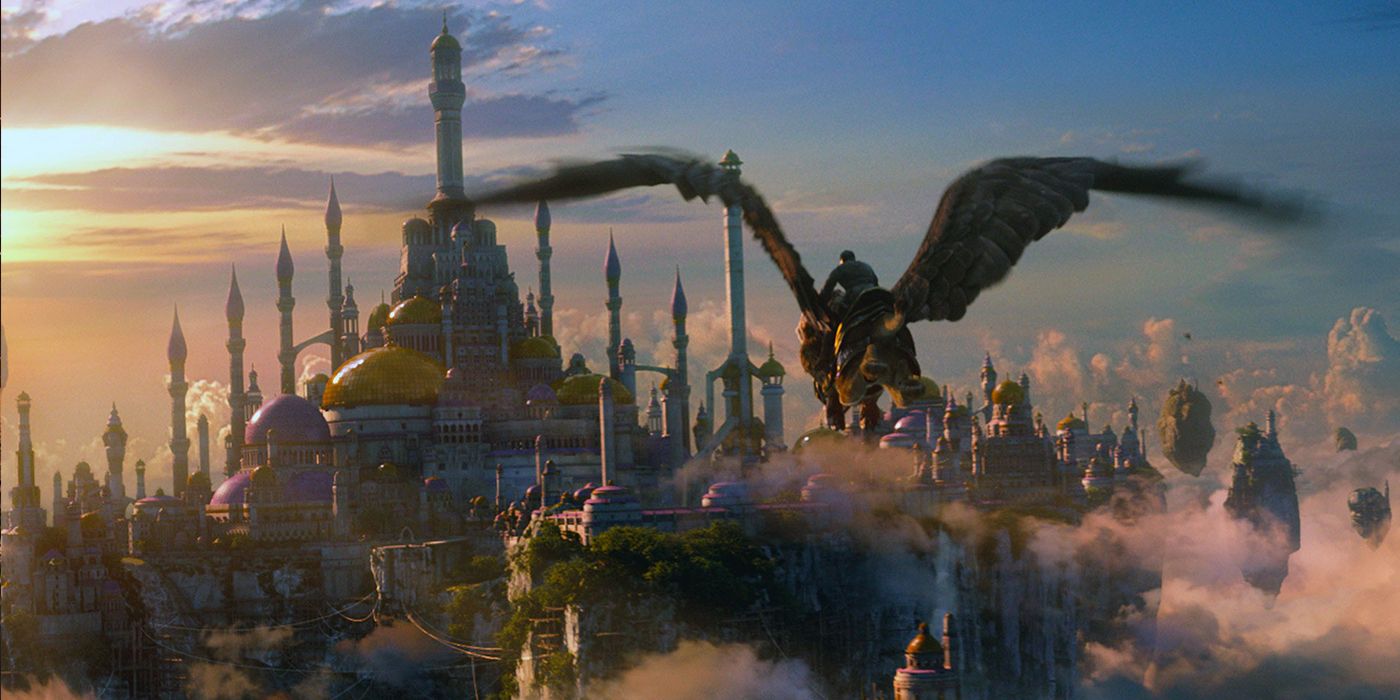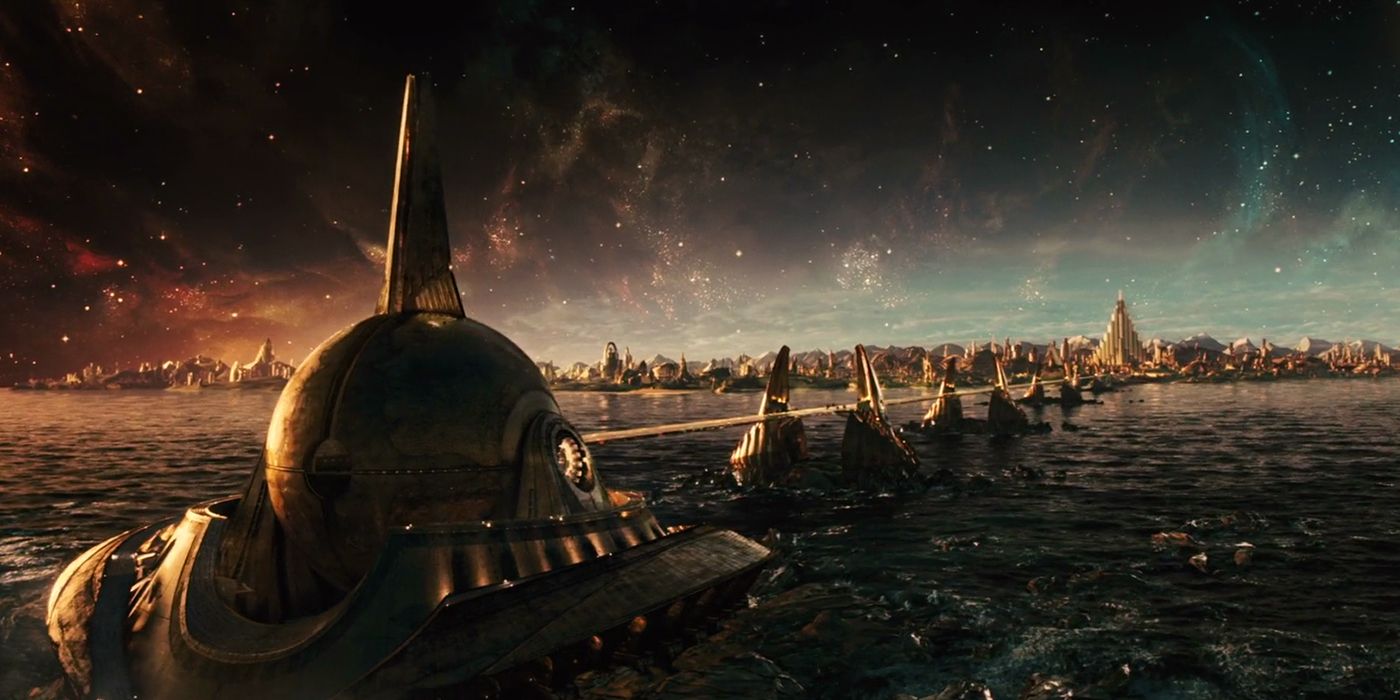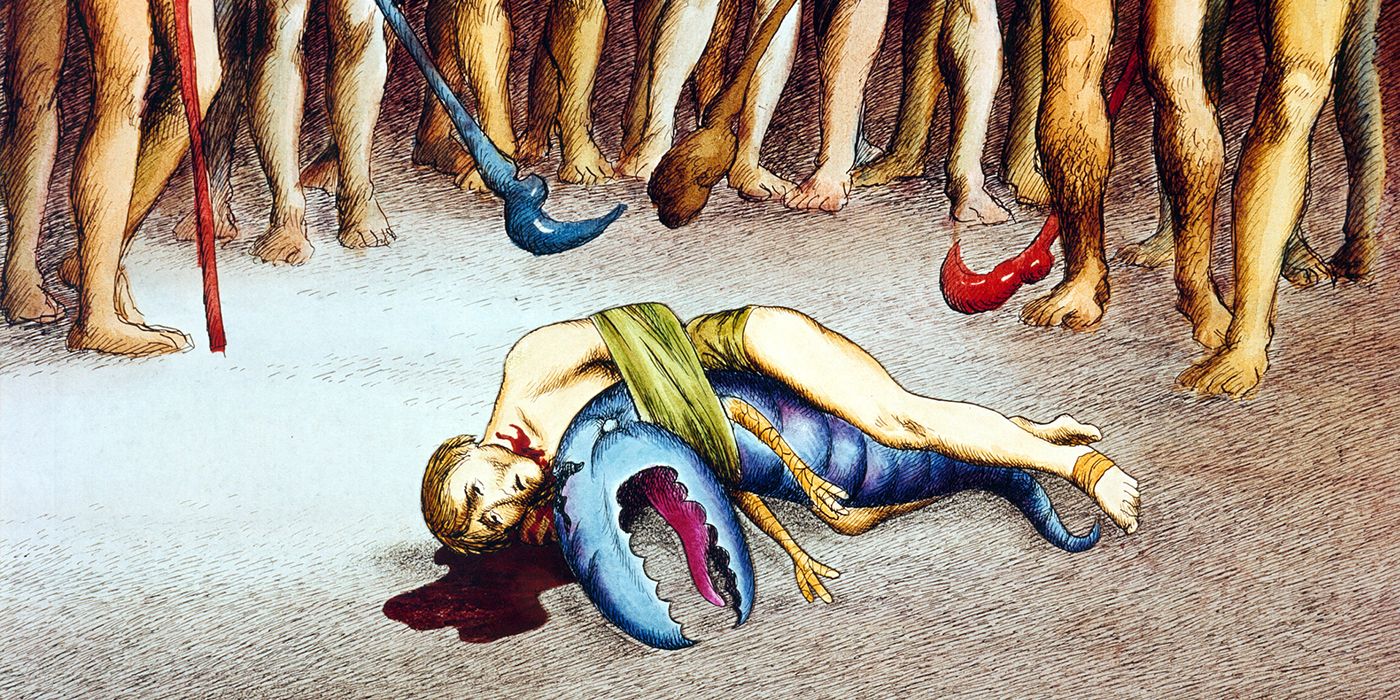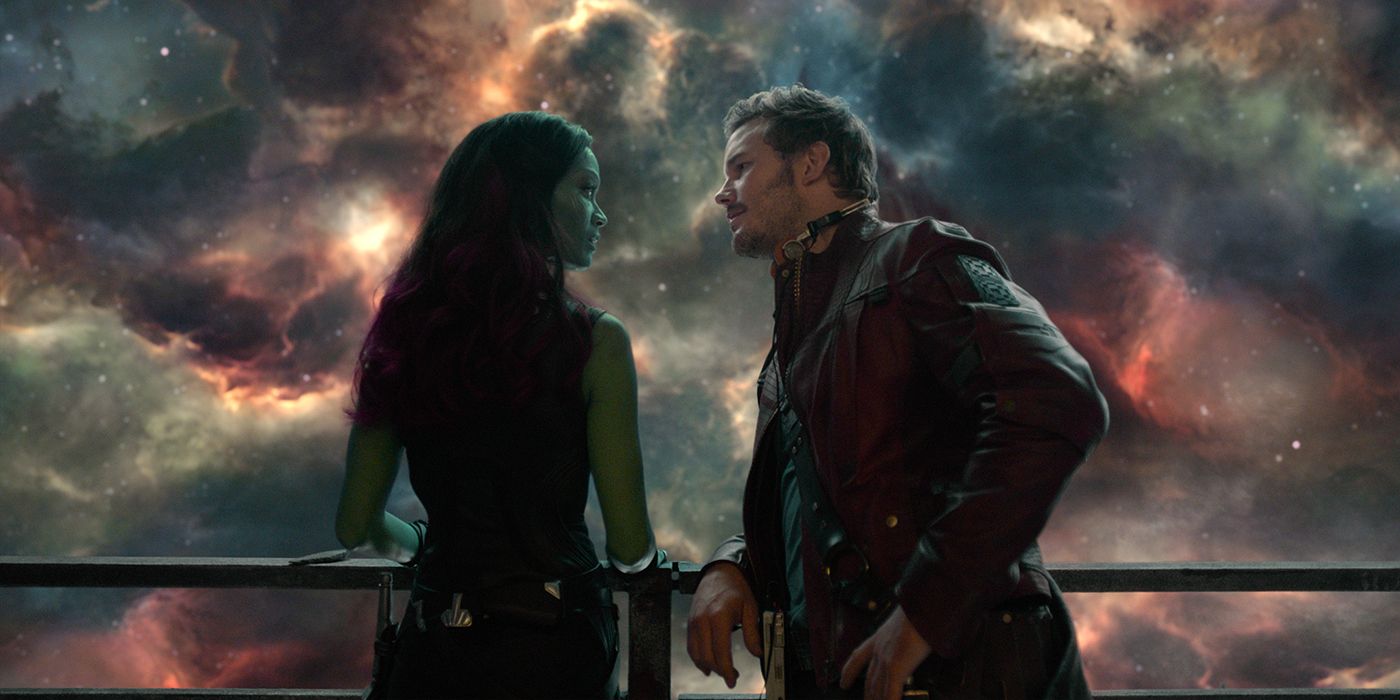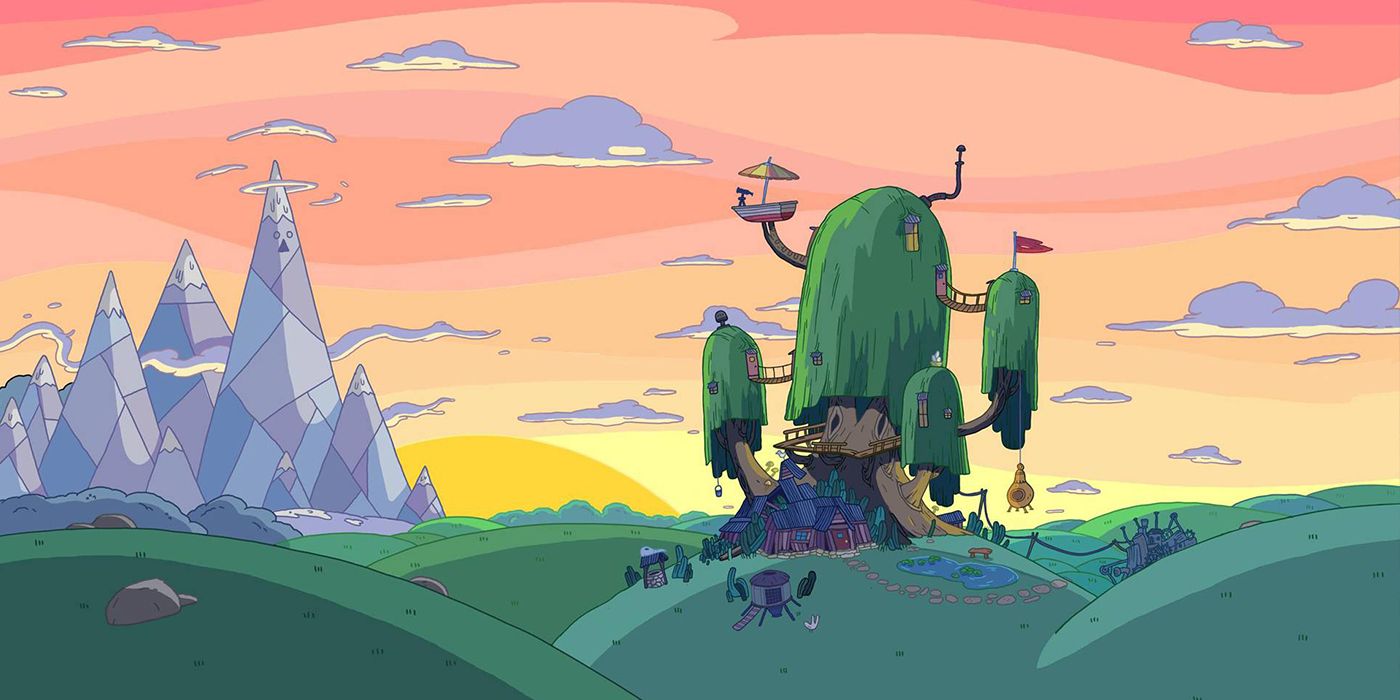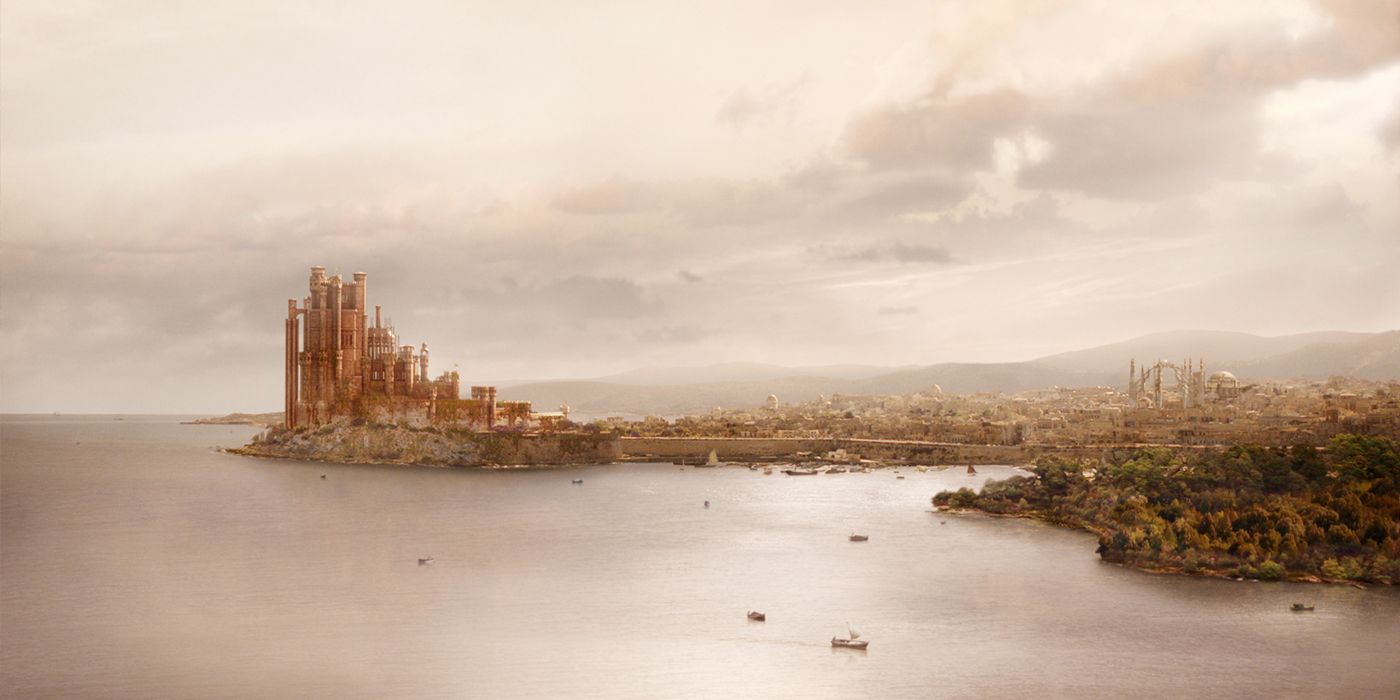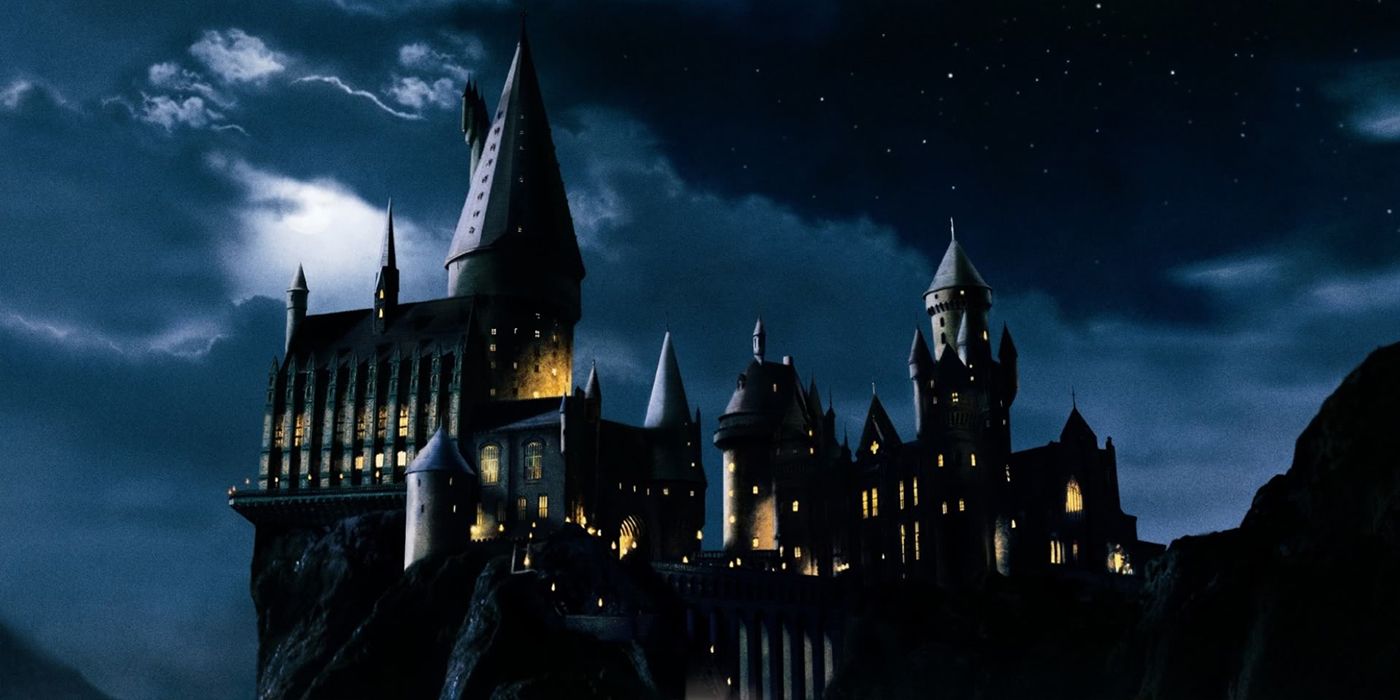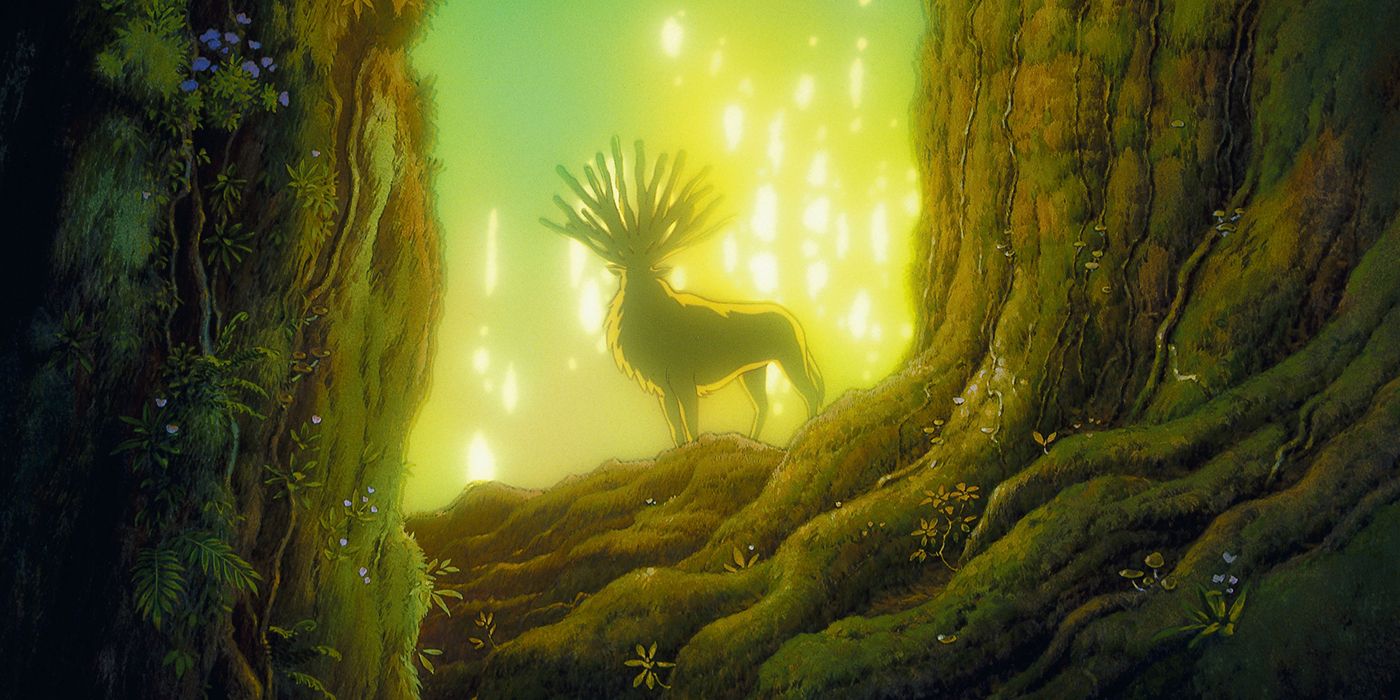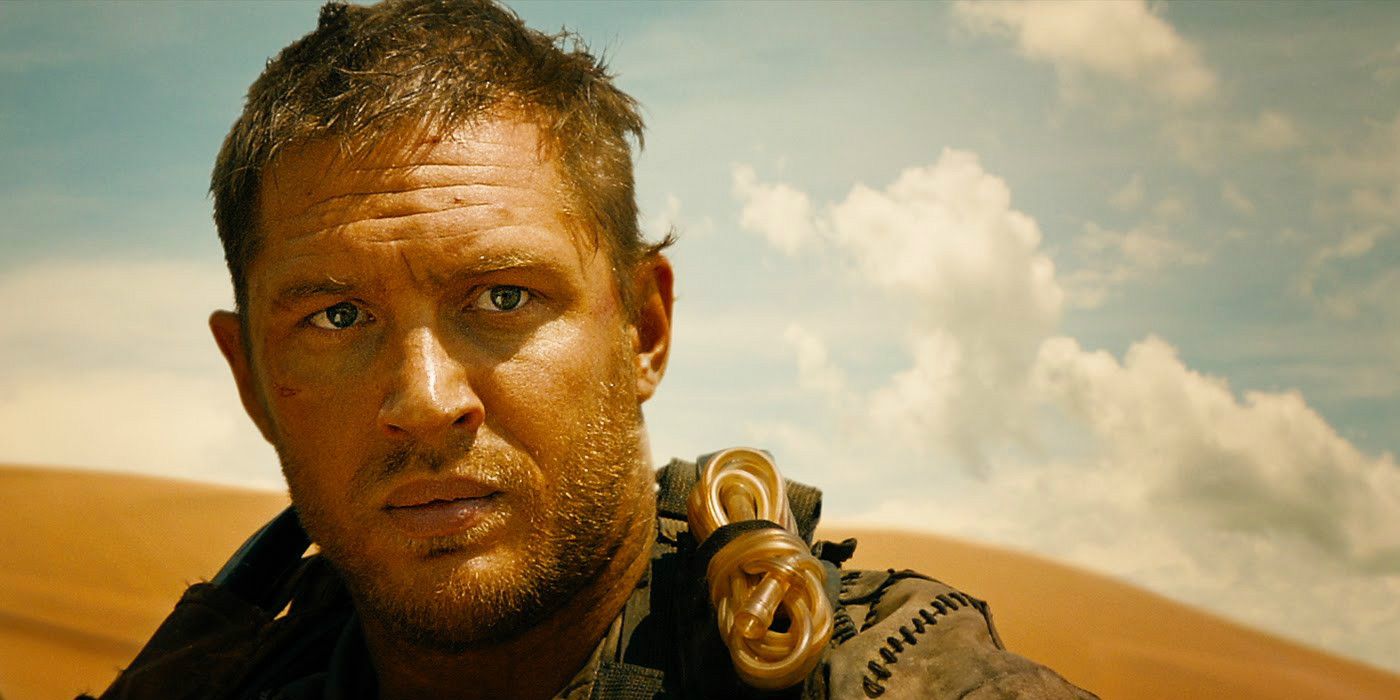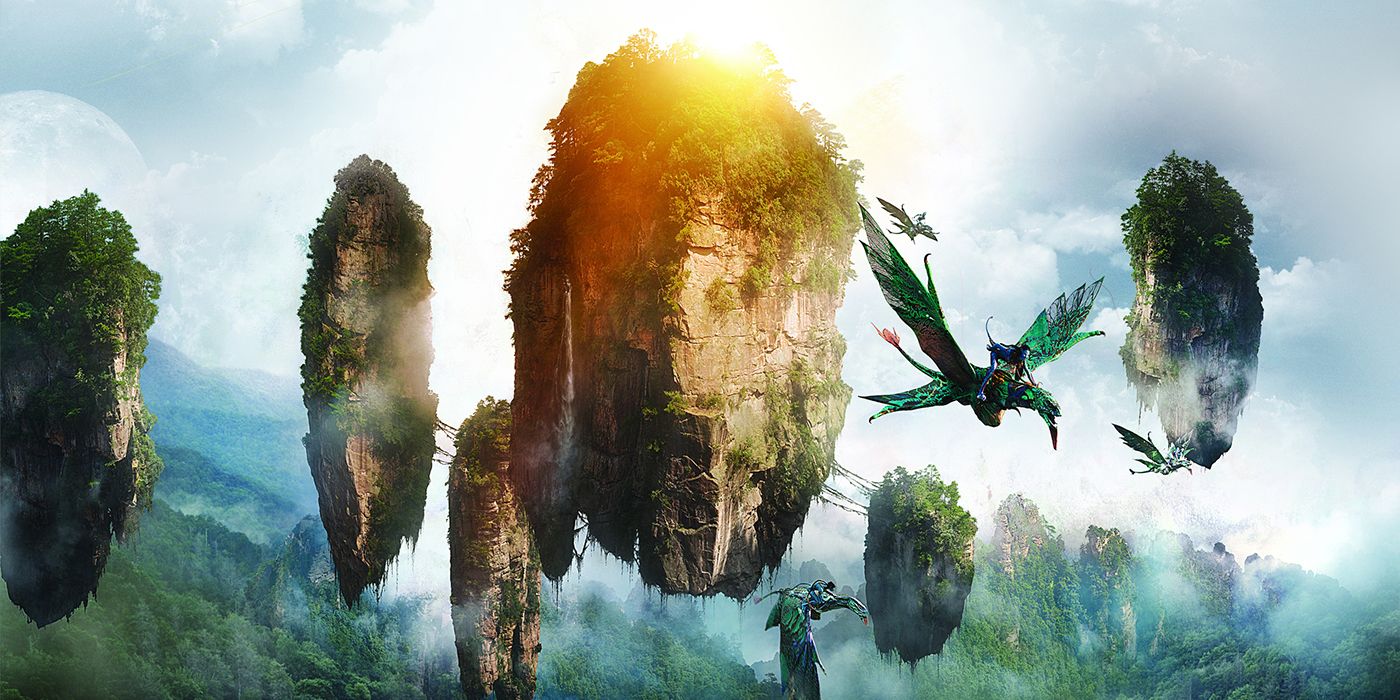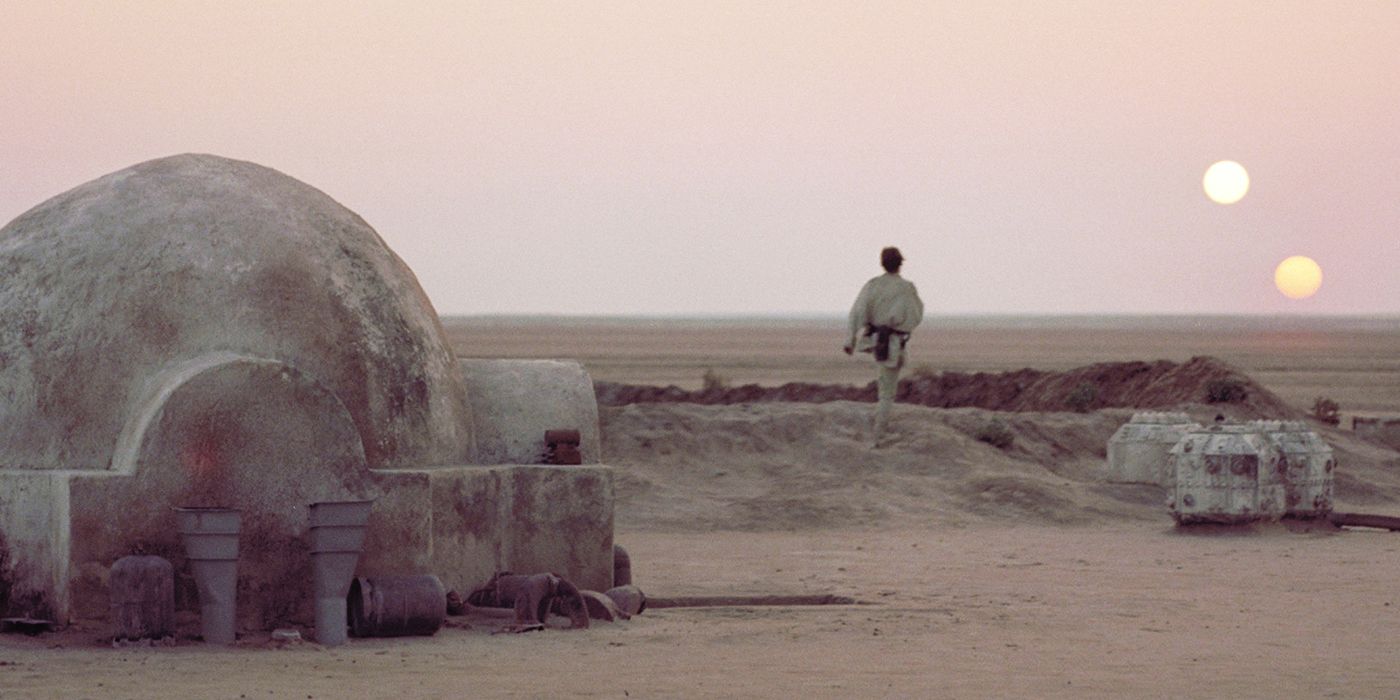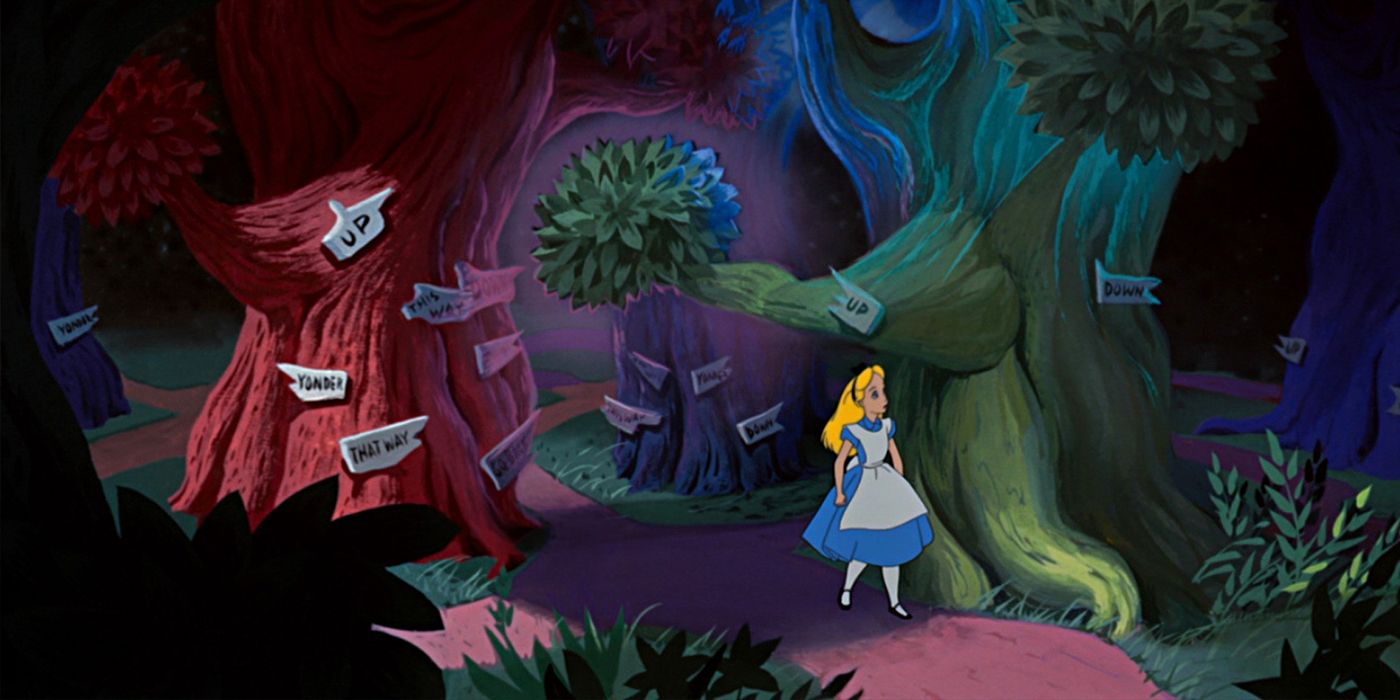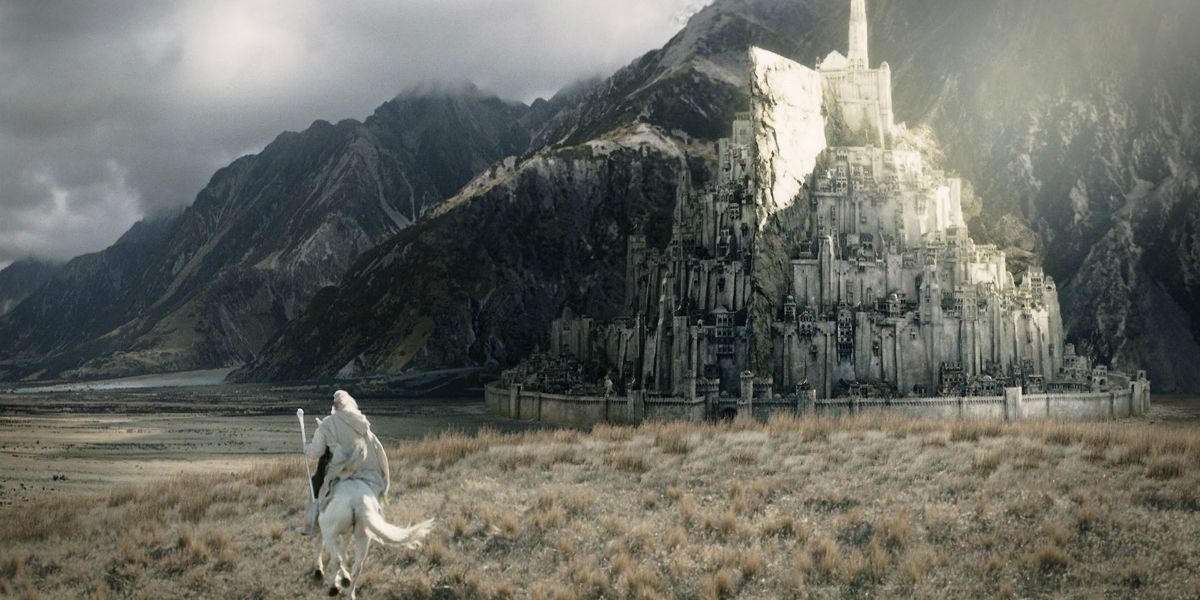The creation of fictional worlds is sometimes viewed as escapism, but it is really a challenging mental exercise as old as history. From ancient mythologies, to Arthurian legends, to modern fantasy fiction, man always had an aptitude for creating non-existent places: sometimes vast self-consistent universes, like J.R.R. Tolkien’s Middle-Earth, sometimes mysterious alternate dimensions, like H.P. Lovecraft’s Dreamlands, and sometimes hidden domains within our very own dull reality, like J.K. Rowling’s Wizarding World. These realms of reverie are a distinctive indicator of the expansive capabilities of the human mind.
From very early on, filmmakers were attracted to the idea of constructing entire fictional realities in their movies. Primarily based on fantasy literature, these materializations have often faced issues of persuasiveness and fell short of their source material. In many cases though, we witnessed compelling fantasy worlds, filled with magnificent geography and incredible flora and fauna, entire made-up cultures, featuring genuine folkway and lore. In a medium heavily depended upon the illusion of perception and the misleading of audiences, these fantasy worlds have regularly been illustrated as brilliant metaphors for our own perceivable world.
In the light of the upcoming adaptation of Stephen King’s Western fantasy epic The Dark Tower, DCEU’s highly anticipated cinematic versions of Themyscira (in Wonder Woman) and Atlantis (in Aquaman) and the multiple world-generating 1980s-worshiping sci-fi Ready Player One, currently filming by Steven Spielberg, it’s time for a retrospective.
Here are the 15 Times Fantasy Worlds Were Brought Perfectly To Life.
15. ARRAKIS / DUNE
Frank Herbert’s Dune is often considered the most significant literary work in science fiction due to its incredibly detailed world-generating. In a medley of influences from ancient Greek mythology, Middle Eastern theology, and Japanese Zen philosophy, Herbert not only established his own distinctive lore, he created a whole ecological system, so unique and complex in its conception that it reportedly inspired entire environmental movements in the late 1960s.
Surrealist shaman Alejandro Jodorowsky’s compelling vision for the cinematic adaptation of Dune is a true Hollywood legend, and one that can be glimpsed in Frank Pavich‘s excellent documentary Jodorowsky’s Dune. After the project sunk, producer Dino De Laurentiis acquired the novel rights, gathered all the available pre-production pieces and appointed it to the upcoming young director David Lynch. The final result was a mess of epic proportions, a failure denounced by Lynch himself.
Despite its flaws though, 1984’s Dune stays truer to Herbert’s masterpiece than Jodorowsky ever meant to. A big part of the initial concept art found its way to the film’s design, while the realization of its main planet and home of the godsend spice, Arrakis, withholds some of the unfilmed version’s mystical psychedelic charm.
14. NARNIA / CHRONICLES OF NARNIA
Spawned from the imagination of Irish author C. S. Lewis, Narnia is one of the most beloved fantasy worlds, and an essential entry to this list. A good friend of J.R.R. Tolkien’s, Lewis conceived The Chronicles of Narnia during World War II, something that played a huge part in the molding of his story. The fact that thousands of children were evacuated from London and other big cities to the countryside was the stimulus in developing the idea of his little protagonists being magically transferred to the lands of Narnia.
Adapted repeatedly in the past, Narnia acquired its own cinematic universe by Shrek director Andrew Adamson, who kickstarted a fairly successful franchise of three instalments (the latter of which was directed by Michael Apted). To bring his vision to life, Adamson cleverly recruited Peter Jackson and Richard Taylor’s Weta Digital & Weta Workshop. Equally drawing from Greek, Roman and Celtic mythology and incorporating Christian themes as well, they created a brighter, more hopeful, and, of course, more children-friendly fantasy land than Middle-Earth.
Like Lord of the Rings, Narnia was shot in New Zealand, in order to capture the magical geography that Lewis based on his own experiences in Ireland’s breathtaking landscapes.
13. AZEROTH / WARCRAFT
The adaptation of one of the most massively popular video games of all time never was and never will be an easy task. Warcraft’s developing company Blizzard, along with semi-independent Legendary Pictures, went ahead with a rather unusual choice for the film’s direction, offering the job to David Bowie’s son and visionary filmmaker, Duncan Jones.
Starting as an indie with 2009’s sensational Moon, Jones methodically planned his way to mainstream Hollywood, crash-testing his abilities inside the studio system with the decent sci-fi thriller Source Code. In 2013, he stepped into Sam Raimi’s shoes - who was initially attached to the project - and severely changed its storytelling direction. In Jones’ version, the orcs are presented as much more than mindless beasts. They have clear purpose, their motivations make sense and they actually steal the show from their human antagonists. Their decaying homeland, Draenor, is stunningly designed as a nightmarish hell, in contrast to Azeroth, which is brilliantly brought to life by production designer Gavin Bocquet, known for his work in the Star Wars prequels.
Warcraft’s world-creating is refreshing and imaginative, filled with tasteful peculiarities that denote Jones’ influence. The film is far from perfect, but it is a engaging extreme fantasy ride definitely worth taking by fans of the genre.
12. ASGARD / THOR
When it was announced that the first ever cinematic appearance of Marvel’s iconic character Thor was to be presented by Irish filmmaker Kenneth Branagh, those initiated to his previous work knew to expect something more than your average looking blockbuster. The noted Shakespearean actor/director hasn’t taken on a big-budget Hollywood production since the days of Mary Shelley’s Frankenstein and he definitely had fun with Marvel’s property, making the most of the tools given at his disposal and treating the film with seer enthusiasm.
Thor adapts the Norse Mythology concept of the Nine Worlds to the MCU, introducing us to Asgard, home of All-father Odin. Asgard’s otherworldly look in the comics is something Branagh was familiar with and got intrigued by. In fact, the image of guys riding in horses across a rainbow bridge in outer space, which can so easily be done wrong and turn out kitschy and campy, goaded him to get involved in the project. He was given creative freedom to build Asgard in his own way. Branagh transfused it with an epic quality, approaching it with magnificence and a sense of wonder.
His extravagant vision for Asgard is captured in every single frame of its radiant Technicolor glory. Shakespeare would approve.
11. YGAM / FANTASTIC PLANET
In a remarkable career of three features and five shorts, France’s leading animator René Laloux excelled in creating visionary, self-contained new worlds. From film to film, he established a unique, instantly recognizable aesthetic, developing a distinctive personal voice with clear political extensions. His imaginative creations breathe an amazingly odd aura that is rarely seen in Western animated tradition.
Ygam is the name of the planet where the action takes place in his 1973 full-length debut Fantastic Planet. The planet’s dominant race, the blue colossi Draags, declare war on their pets, a human-like lesser species called Oms, when a young Om steals an artifact that contains Draags' collective knowledge. Deformed piglets, foul predators, flying fish, and weird synth-sound-making gloopy-liquid-vomiting plants are just some of the specimens of Ygam’s outlandish and often hilariously funny, indigenous flora and fauna.
Laloux’s surrealist universe and its anti-totalitarian notions, resulted in an essential cult classic, a landmark of both animation and science fiction.
10. ANDROMEDA GALAXY / GUARDIANS OF THE GALAXY
Guardians of the Galaxy is a watertight proof that making a deeply personal film within the tight franchise generator which is Marvel Studios, is absolutely possible. To its advantage, Marvel is known for daring different things and trying different genres in each piece of its versatile cinematic puzzle. Taking the space opera genre to exciting new levels, director James Gunn perfectly introduced a bunch of broadly unknown comic-book characters in an outrageously fun and well-crafted film.
Guardians of the Galaxy is MCU’s first dive into the extended cosmic plains of the comics (Thor’s Nine Worlds are a different concept and yes, it’s better not to think about it too much). The film takes place in the Andromeda Galaxy, a system of planets full of mysterious artifacts, weird-looking aliens, eccentric collectors and galactic misfits. We’re introduced to the culture of Xandar, the capital of the Nova Empire, home of the human-like Xandarians and the intergalactic police force Nova Corps, and the Kree, a scientifically and technologically advanced race of blue-skinned war-like humanoids. Each race is presented with distinctive elements: humor when it comes to the Xandarians and their hilarious one-liners and awe when it comes to the Kree, their fearful renegade Ronan the Accuser and his majestically designed warship, The Dark Aster.
Guardians of the Galaxy is 100% James Gunn’s vision, a peculiar, colorful and nostalgic joyride that nods to 1970s and 1970s pop-culture, through its filmic references and creative use of music. It is arguably one of MCU’s best offerings to date.
9. LAND OF OOO / ADVENTURE TIME
First off, if you haven’t watched Adventure Time, you should drop everything you’re doing and get to it immediately. Influenced by video games, Dungeons and Dragons and the works of Hayao Miyazaki, Pendleton Ward’s beautifully drawn creation is by far the most insanely imaginative animated show ever to air on a TV network, only rivaled by Adult Swim’s brain-melter Rick and Morty in its sense of whimsical creativity.
Adventure Time fables the spectacular quests of Finn the Human and Jake the Dog, in the post-apocalyptic Land of Ooo. One thousand years after a world-changing nuclear event called "The Great Mushroom War", magic has returned to the land and several kingdoms have risen, such as the Candy Kingdom, the Ice Kingdom, the Castle Lemongrab and the Lumpy Space. Finn and Jake’s travels across these vibrant lands introduce us to oddball creatures, surprising complex philosophical concepts and hands-down impossible storylines. The way Ooo’s history is being progressively revealed from episode to episode, intertwining with the character’s own backstories, suggest pure world-creating genius.
Though originally targeted towards kids, Adventure Time may be a bit too trippy and absurd for young ones, but it can surely take teens and adults into an unforgettable and rather addictive psychedelic journey. No drugs needed.
8. LAND OF OZ / THE WIZARD OF OZ
“Toto, I've a feeling we're not in Kansas anymore.”
In the wake of the events of the devastating 1929 crash and the ten-year-long Great Depression, The Wizard of Oz was the perfect fantasy gateway. Victor Fleming’s archetypical tale of a farm girl who strayed into a world of wonder, brought back hope and magic to a country that was trying to get back on its feet.
The symbolisms in Wizard of Oz and its characters are unmissable. The irrational Scarecrow, the emotionally empty Tin Man and the fainthearted Lion are vivid representations of the late 1930s American society. Dorothy, as the all-wise embodiment of optimism, takes them by the hand and walks them through the fascinating domain of the mythical wizard Oz that is wonderfully showcased in glowing Technicolor, in contrast to the desaturated greys of the real world.
Almost 80 years after its release, Wizard of Oz remains a pure masterpiece, still relevant to modern audiences. It is also the film that established fantasy as an appreciable cinematic genre.
7. WESTEROS / GAME OF THRONES
The common perception that fantasy can only concern geeks and fanboys came to a staggering end by the time HBO’s Game of Thrones aired on our TV screens. David Benioff and D. B. Weiss’ ambitious creation, an adaptation of George R. R. Martin's fantasy novel series A Song of Ice and Fire, altered the way people think of dramatized fiction that is set on a fantasy surrounding.
Game of Thrones occurs in the imaginary continent of the Westeros, or The Seven Kingdoms. Unlike similar worlds, magic, although existent, is broadly forgotten here. In a ferocious and menacing reality, reminiscent to the historical Dark Ages, political games and plots is what moves the world around. The setting of Westeros is so convincingly concocted that you can almost feel its dirt and smell its decay. Containing scenes of graphic violence and explicit sex, Game of Thrones turned out to be a game-changer of the fantasy genre, an impressive U-turn towards more disturbing and mature territory.
Since its first season five years ago, the show became so massively popular, it formed one of the most devoted and quickly developed fan-bases ever, counting even nation leaders as declared enthusiastic fans.
6. THE WIZARDING WORLD / HARRY POTTER
The generation-spanning Harry Potter films managed to maintain a surprising high quality level, becoming better, maturer and more sophisticated with every new entry. Collecting an impressive assembly of talented young cast and diverse but important directors, and also supported and supervised by author J.K. Rowling herself, the series are ranked amongst the most respected franchises in film history.
Unlike standalone fantasy continents like Narnia and Middle-Earth, what’s interesting about Harry Potter’s wizarding world is that it co-exists with ours. Hidden from the eyes of us uninitiated Muggles, it lingers in the shadows of our own reality, well protected by the powerful spells of the leading wizards. Warner Brother’s creative team managed to give birth to a captivating universe, full of charming secrets and delightful discoveries that never ceases to pleasantly surprise the viewer.
From Chris Columbus’ playful first offering Harry Potter and the Philosopher’s Stone, to David Yates’ two-parted dark conclusion Harry Potter and the Deathly Hallows, the cinematic version of Rowling’s beloved world has shown such exemplary integrity and coherence that other fantasy films can only dream of.
5. THE FOREST / PRINCESS MONONOKE
Being one of the most imaginative and influential filmmakers of all time, Hayao Miyazaki’s legacy is a compendium of the fantasy genre, overflowing with astonishing ethereal worlds. 1997 signaled a slight departure from his kid-friendly creations, when he introduced us to his darkest, most violent and ultimately most memorable film to date, his magnum opus Princess Mononoke.
The dominant theme in Princess Mononoke is the everlasting battle between man and nature, between technology and spiritualism. Miyazaki’s comment is subtle. He avoids taking sides, blurring the line of what’s good and evil and aptly propagating the universal message of co-existence. His environmentalist sensibilities are wonderfully showcased in the realization of the forest, the dwelling place of the spirits and gods. When inside the forest, it is as if conventional notions of place and time do not longer apply. It is a non-place, both wondrous and frightening, both capable of giving and taking life. Among its inhabitants, the Kodama are portrayed as the playful side of blooming nature, while the Great Forest Spirit represents the mystifying forces of the ancient world.
20 years after its release, Princess Mononoke remains a landmark of a true visionary, an animated work unprecedented in its conception, a monumental epic of rare, primordial beauty.
4. THE WASTELAND / MAD MAX: FURY ROAD
“My name is Max. My world is fire and blood.”
Decades in the making, tons of rumors, massive delays, production hell. Even the most optimistic fan could never have hoped for what Mad Max: Fury Road turned out to be: a sweeping genre-defining action movie that puts most of the high budget CGI-heavy Hollywood productions to shame. Australian director George Miller proved that a seventy-year-old’s deranged vision can result in one of the most energetic and original films in recent years.
From the War Boys and their Blood Bags, to the breeding Brides and the Coma-Doof Warrior, the world-generating in Mad Max: Fury Road is phenomenal. Miller invented an entire post-apocalyptic society, brimful of its own customs, codes and oddities. At the decay of western civilization, where mankind shattered and technology has become extinct, the remaining people worship the last token of human engineering, the V8. Immortan Joe’s Citadel is the last paradise on earth, leaving the people below it craving for a sip of its vast amounts of stored water. The rest of the known world is an endless dangerous desert, inhabited by war-mongering tribes, explosive-packed greasers and bizarre-looking crow-people.
Miller’s deliberate choice to present this intricate cultural system, not via overly explained narrations and flashbacks, but through small glimpses of its folkways in a two-hour franticly-paced car chase, demonstrate nothing sort of a filmmaking genius.
3. PANDORA / AVATAR
Being responsible for the two highest grossing films in history means - if anything - that you’re doing something right. Faithful servant of the science fiction genre and a constant innovator of the cinematic medium, James Cameron rightfully earned his place as the proclaimed “king of the world”.
For his sci-fi epic Avatar, Cameron created the single most intensely detailed fantasy world ever to be put on the big screen. Set in mid-22nd century, where human technology took a couple of giant leaps and made intergalactic travel and space colonization possible, the story takes place in the remote Alpha Centauri System, on an exotic moon called Pandora, inhabited by a tribal race of 10-foot tall blue humanoids, the Na’vi. In this peaceful paradise, where nature and intelligent life live together in perfect harmony, human influence and intervention brings - as expected - catastrophe.
Storywise, Avatar is not the most original film you’re likely to see. It’s essentially the Pocahontas/Dances With Wolves/The Last Samurai tale all over again, where the white male joins an alien culture he initially stood against, absorbs it almost overnight and bests pretty much everyone in it. The power of the film lies elsewhere: its impeccable world-generating. With its thoroughly constructed flora and fauna and its unreal geography that looks like it popped out of a Yes album cover, Pandora is a complicated ecological system so magnificently conceptualized that it needs to be seen in its entire 3D glory to be believed.
When Avatar came out in 2009, its portrayal of Pandora’s idyllic utopia, as well as its unsettling environmental themes, had reportedly caused occurrences of mass depression and suicidal tendencies, demonstrating its huge impact on audiences.
2. THE STAR WARS GALAXY
Back in the late 1970s, America was going through a phase of self-reflection, confronting the ghosts of the recent past and its loss of innocence. Enter George Lucas, a talented young director from Modesto, California, talking about spaceships, princesses and laser swords. Some mocked his outdated and irrelevant geeky fantasies; others believed in his genuine vision and encouraged him to move forward with it. The rest is cinema - and world - history.
Opening with the most recognizable tagline ever, “A Long Time Ago In A Galaxy Far, Far Away”, Star Wars transports us to the center of a fascinating universe where everything’s possible. Lucas dug deep into Zen philosophy, chivalry lore, and the essence of heroism and adventure, taking inspiration from Joseph Campbell’s pioneering writings. He invented a new mythology, rich in cultural elements, religious symbolisms and political subtext. The Jedi Knights and Sith Lords; the Galactic Republic and Evil Empire; the many species, locations, artifacts, and, above all, the Force, were instantly absorbed by audiences, as if it was part of our own human history.
The relatively small budget Lucas had to work with forced him to be practical, and ultimately favoured the lived-in look of Star Wars. Opposing to the shiny robots and cutting-edge tech of the past, he remodelled the sci-fi genre, introducing for the first time an authentic futuristic world that was rusty and worn out by the passage of time. His outright lovable characters are integral pieces of this world, each one with their own personal history and purpose. And although the prequels signalled a change of course in the artistic direction to a more effects-driven and child-friendly approach, one can still find traces of his innate world-generating ability.
Star Wars is arguably the most influential film franchise in history: a one of a kind pop culture phenomenon that continues to inspire different generations of movie goers, forty years after its first installment.
HONORABLE MENTIONS
Before moving on to the best of the list, it would be remiss if we didn't discuss two important works of world realization.
Although the movie deviates significantly from Robert E. Howard’s famous Cimmerian brute, 1981’s Conan the Barbarian is a solid introduction to the savage world of Hyboria, bound to please all sword & sorcery and dark fantasy devotees. Directed by John Milius and written Oliver Stone, the movie cemented in all our minds the image of Arnold as the titular Barbarian. Be cautious with 1984's badly executed (but deliciously campy) sequel, and dismiss altogether the ideally cast but flat-out uninspired 2011 remake.
Then there's Wonderland. Largely misconceived at its time due to its confusing, psychedelic nature, Disney's first Alice in Wonderland was a box-office flop, but through time it gained the well-deserved status of a cult classic. Let's not mention Tim Burton's messy, three-dimensional reboot of the series - though time may be kind to that iteration, as well.
1. MIDDLE-EARTH / THE LORD OF THE RINGS
Ingenious New Zealander Peter Jackson achieved the unachievable when he adapted J.R.R. Tolkien’s supposedly "unfilmable" books, transforming himself from a B-movie director to one of modern cinema’s biggest household names. Fifteen years ago, The Lord of the Rings came to our world, changing the fantasy genre and what we perceive as cinematically possible, forever.
Widely considered a masterpiece, The Lord of the Rings is far more than just a high fantasy novel. Tolkien’s ultimate purpose writing it was to establish a whole mythology, one that his country, England, was lacking. Placing his narration to the mythical plains of Middle-Earth, he enriched his archetypical heroic storytelling with a fully realized and complicated civilisation, creating distinctive characteristics, original languages and complete cultural codes for each of the indigenous races. His unique world influenced entire generations of writers, painters, musicians, filmmakers and daydreamers.
To bring this ambitious project to life, Jackson deployed the striking grandeur of his homeland’s physical landscape, forever equating New Zealand with Middle-Earth. He summoned his own prop and VFX company, Weta, and alongside the co-founder Richard Taylor and a massive ensemble of incredibly gifted artists and craftsmen, he materialized Tolkien’s continent with unparalleled depth and detail. His grand-scaled, yet heartfelt and profoundly personal narrative, in addition to his use of practical and digital effects and the perfecting of the motion capture technique (which introduced us to Gollum), immensely raised the bar of epic filmmaking.
Fantasy world creation entered a new era after Peter Jackson’s The Lord of the Rings trilogy. To this day, his cinematic version of Middle-Earth remains the best on-screen realization of a fantasy world.

